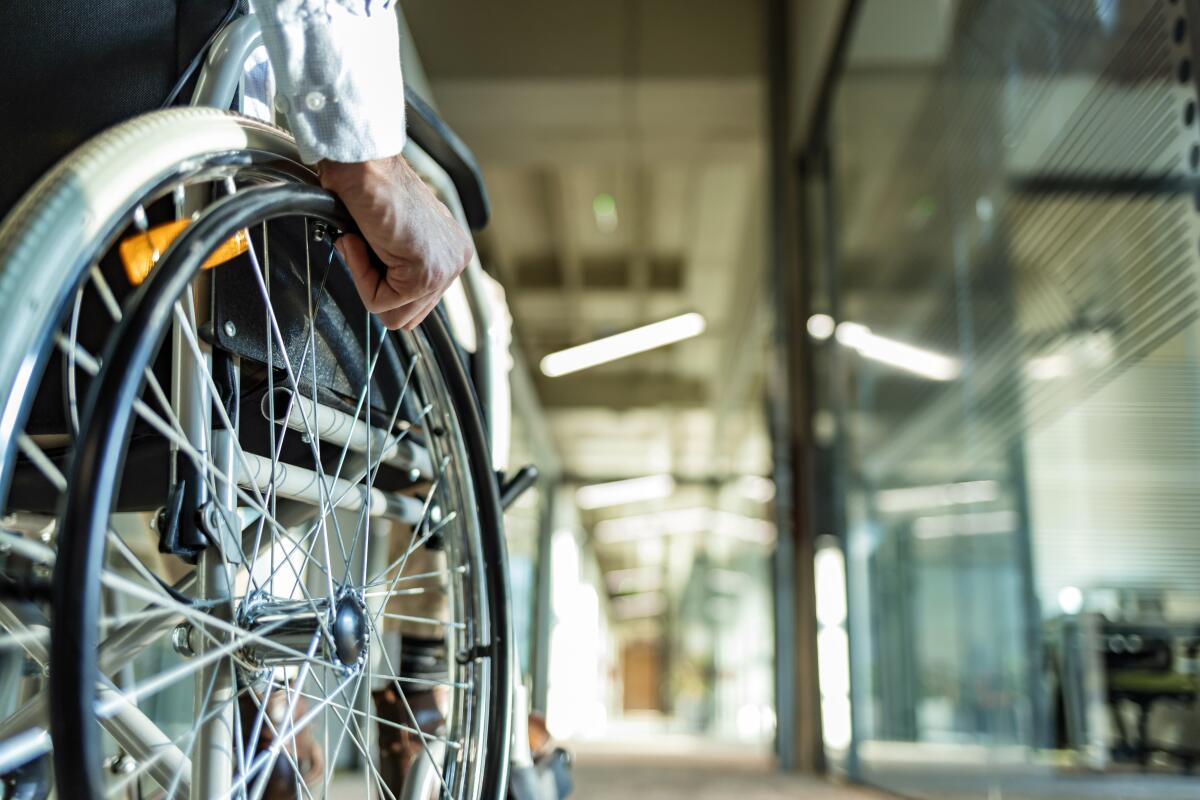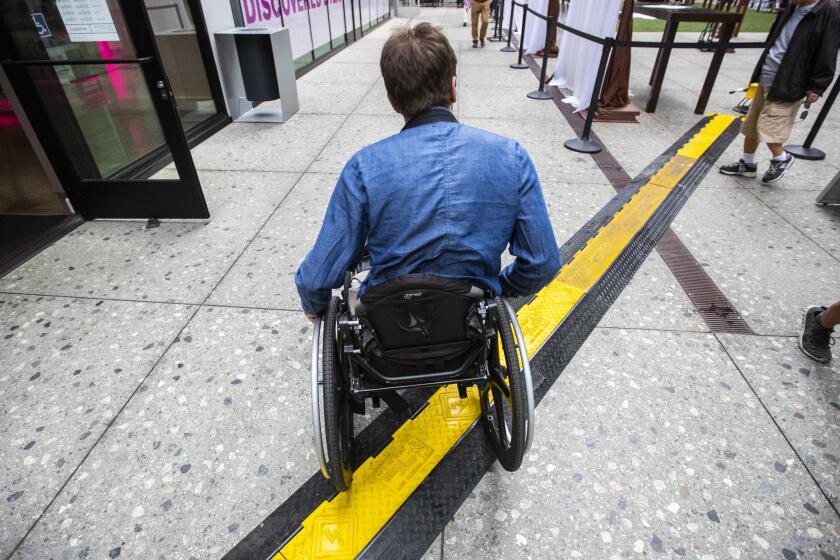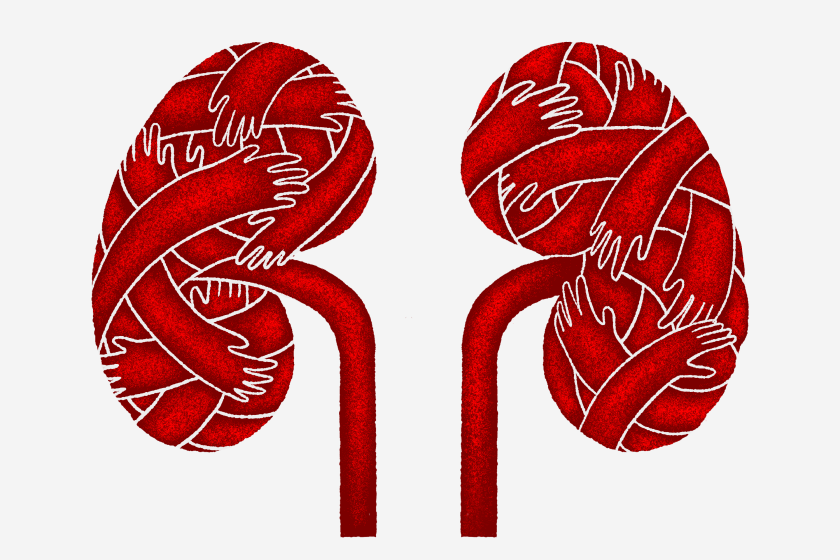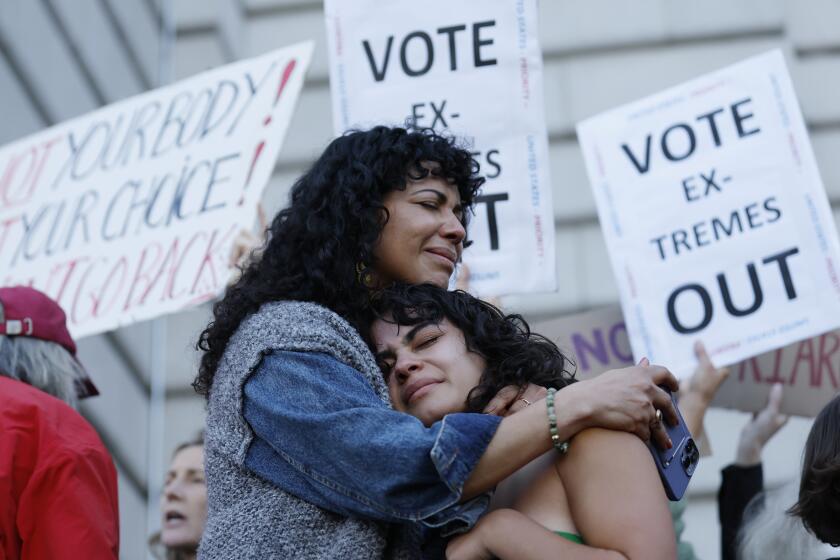Opinion: An IED made me a double amputee, but that didnât mean I couldnât continue to serve in the Army

Over the last 16 years, Iâve managed a major military base, run a government contracting business, appeared in two motion pictures and made motivational speeches before hundreds of audiences all over the country, most notably to the New York Giants when they beat the New England Patriots in the 2008 Super Bowl.
Do these sound like the accomplishments of a disabled person?
In 2007 I lost both my legs above the knee in an IED explosion in Iraq. My first job was to recover. But my next task after being wounded was figuring out how to stay in the Army.
I used to reject attempts at kindness from well-meaning strangers. Then I had my sons and changed my mind.
I am a 26-year Army veteran. During that time, I served in every major conflict in which the United States was involved, including Operations Desert Shield/Desert Storm in Kuwait, Operation Joint Forge in Bosnia-Herzegovina; Operation Enduring Freedom in Afghanistan and, as I mentioned, Operation Iraqi Freedom. Still, once Iâd mostly recovered from my injuries, I was required to face a medical evaluation to determine whether I was fit to serve.
Obviously, the Army canât be filled with people like me if itâs going to maintain a ready force. And the Army just assumed Iâd had enough. So Army HR began nudging me toward the exit.
But the Army wasnât paying me to run. They were paying me to lead. And I wanted to continue to serve my country.
Disabled workers say theyâre a canary in the coal mine: âIf disability is on the caboose of the writing chain, we will be the first people to get pushed out.â
So I fought the Armyâs assumptions. I looked for options and I learned of a path called Continuation On Active Duty. Itâs a program for soldiers who have been determined unfit by the Armyâs Physical Disability Evaluation System but may remain on active duty nonetheless. The programâs objective is to âconserve manpower by the effective use of needed skills or experience.â After completing a mountain of research and paperwork, I was permitted to stay in the Army.
Once I got a COAD exemption, I went on to direct the Armyâs Wounded Warrior Program, known as AW2. I had about 10,000 wounded soldiers to assist, mostly as they navigated benefits or employment while they transitioned out of the Army. After that I was promoted to colonel, then became the garrison commander at Ft. Belvoir in Virginia, a job thatâs sort of like being a mayor. I made sure things ran smoothly on the 8,600-acre base, which houses 16 Army agencies and nine Department of Defense agencies, along with U.S. Army Reserve and National Guard units.
I donât mention all of this to make myself sound like some sort of hero. I simply want to demonstrate what can happen when the mainstream reaches into its contributing tributaries. Rather than thinking of disabled people as a drain, we should be thought of as a resource.
Developmentally disabled Californians get different levels of service and self-determination depending on where they live and the color of their skin. Current legislation to promote equity could help.
More than 8.6 million people with disabilities are part of the American workforce, according to the U.S. Census Bureau. But 1.3 million more are unemployed. The U.S. unemployment rate as of September was 3.5%, compared to 7.8% for those the Department of Labor considers to be disabled.
Hereâs a better term: differently abled. We find workarounds for things like hearing or vision loss, and cognitive difficulties. Many, like me, use a wheelchair. We may require some sort of accommodation, but we tend to be worth it.
Think about it: Disabled job applicants have overcome something. Theyâve demonstrated resourcefulness and probably quite a bit of creativity. If employers are overlooking differently abled people when they hire, they are most certainly missing out.
The COVID-19 pandemicâs silver lining for people with disabilities: a lot more remote work opportunities. Will it last?
Disabled people, I believe, are the most universally discriminated-against group in America.
Overall, we make 66 cents for every dollar earned by our able-bodied colleagues. In some states itâs legal to pay people who have a disability less than minimum wage based on the mere assumption that theyâre less productive. And think of this: If you have a physical or mental disability, it may not impair your ability to do many jobs but it could be exceptionally difficult for you to mow your own lawn, do your own laundry or fix a simple plumbing problem. Taking care of such everyday chores may cost double or quadruple whatâs required if you could DIY more of these tasks.
My ânon-directedâ donation, to someone I donât know, saved one life and then some.
There have been some victories. In 1990 the Americans with Disabilities Act was passed, which opened doors for many, but too often, not widely enough. Disabled people are less likely than the able-bodied to work in management or leadership positions. In America weâve learned to call out race- and sex-based discrimination, demanding diverse colors and genders in the workforce, but Iâd also like to see more people running businesses from their wheelchairs, making deals through accessible communications.
The Armyâs COAD program provided me with a path forward after my injury. But it also presented hurdles I had to overcome. I believe that one reason only a small percentage of disabled soldiers stay in the Army is because too few know they have the option and even fewer have the support they need to tackle the red tape. The Army, like private industry, needs to be transparent about opportunities for the disabled.
And yes, the differently abled who demand equality in the workplace have a responsibility as well. If the community isnât reaching out, we need to reach in. Letâs be sure that people around us know what we can do, rather than letting them make assumptions about what we cannot.
Retired Col. Gregory Gadson is co-author, with Terese Schlachter, of his biography âFinding Waypoints: A Warriorâs Journey Towards Peace and Purpose.â
More to Read
A cure for the common opinion
Get thought-provoking perspectives with our weekly newsletter.
You may occasionally receive promotional content from the Los Angeles Times.















